2010 Results of the Year (Part I)
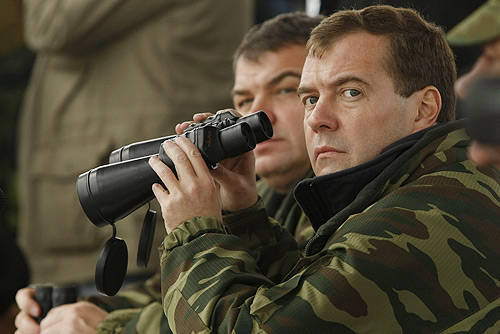
The main result of 2010 of the year can be considered the fact that the military reform carried out in Russia suffered the same fate as all the other recent reforms. The Minister of Defense Supreme Commander is engaged in carrying out the reform. Apparently there is no time to delve into the essence of what is happening, he is fascinated by photography or maybe he believes. that he was not competent in military matters and entrusted the work to this “specialist in the collapse of the army”, who became the odious figure A. Serdyukov. Anyway, the main activity of the minister in this direction essentially comes down to “the reduction of personnel and an increase in the pay”.
And although the military 2010 year was remembered mainly by the scandals in the Serdyukov department, in which he played the leading role, the unsuccessful tests of the Bulava, the purchase of the Mistral, corruption scandals, where reform is taking place without them, there are even some positive results and you can even summarize what we want to do, stopping at each point in detail.
The main military and political results 2010 year.
1. The START-3 agreement is undoubtedly in the first place.
Russian-American Treaty on Strategic Offensive Arms, a global event.
The START-3 agreement was signed by Russian and US presidents Dmitry Medvedev and Barack Obama in April 2010 of the year in Prague. At the moment, it has already been ratified by the US Senate, the line for us is that there is no doubt that it will be approved and signed.
According to the new Treaty, seven years after its entry into force in full, the United States and Russia should have:
- no more than 700 deployed strategic media, i.e. intercontinental ballistic missiles (ICBMs), submarine ballistic missiles (SLBMs) and strategic bombers;
- no more than 800 deployed and non-deployed launchers of ICBMs and SLBMs;
- no more than 1550 warheads on deployed strategic carriers.
In the opinion of the overwhelming majority of military experts and analysts, this agreement fully corresponds to the interests of the United States, but not as Russia.
In the middle of 2010, Russia had 566 carriers, which is already less than the number of warheads and 1741 warheads, only 12% more than the control level, some kind of disarmament, but rather rearmament.
According to the same experts, by the year 2017, if everything goes according to plan, Russia will approximately have just the number of missiles with which the US National Missile Defense System (NMD) will be able to cope without additional reinforcement.
In fact, START-3 can turn into a new arms race, which, for the Russian military-industrial complex torn by reform, can become an impossible task, and a permanent lag behind the US military-industrial complex is guaranteed to it.
But at the same time, there is also another way of developing the START-3 treaty, a path of increasing cooperation in the nuclear field and in the adjacent security fields. For example, joint activities on the example of two powerful powers in the field of nuclear nonproliferation weapons all over the world, the involvement of all nuclear powers in the process of reducing strategic armaments, which, for example, is relevant in matters relating to North Korea and Iran.
In general, we can say that it will be possible to fully give a positive or negative assessment of this contract only over time.
2. The Russian government decided to increase the amount of funding
state armaments program for 2011 – 2020 years and a half.
It was decided to increase the amount of funds allocated to 7 trillion rubles, after which it began to make 20 trillion rubles, instead of the previously planned 13, on 2 trillion rubles for each year.
The decision will begin to be executed, as it were, with a postponement sentence, according to Russian Finance Minister A. Kudrin, the main expenditures on the state armaments program will be made after 2011, for the year 2011 no changes will be made to the federal budget in the defense section.
And judging by the priorities of the army, money is needed, like air.
The first priority is the strategic forces of deterring external threats, which include a missile defense system and aerospace defense, strategic nuclear forces (land, sea and air) and a missile attack warning system. In second place are various types of high-precision weapons using information support from space and other reconnaissance information technology. The third place is occupied by the ACS (automated command and control systems) of all kinds, which according to General V. Popovkin are planned to be linked by the Deputy Minister of Defense to a general management system, with further modernization in the necessary directions of development.
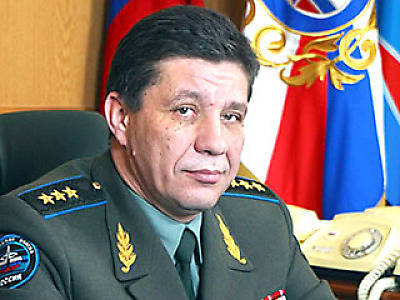
In addition to these basic priorities for the development of military reform, a whole series of priorities for the overall development of the army are envisaged. According to all the same Popovkinna with the millionth army, it is important to have a sufficient amount of means of operative transfer of personnel. First of all, military transport Aviation, for these purposes, it is planned to resume the production of AN-124 Ruslan aircraft, the purchase of 20 such aircraft from 2011 to 2020 is planned by the state armament program. Also in 2011, work will continue on the IL-112, IL-476 aircraft, the upgraded IL-76MD and the joint Russian-Ukrainian transport aircraft An-70. Combat and transport helicopters will also not be left on the sidelines; the Mi-26 helicopter, also included in the procurement plan, will be acquired by the military in 2012. From 2013 to 2015, it is planned to purchase 10 fifth-generation T-50 fighters (PAK FA), another 60 such aircraft are planned to be purchased starting in 2016. The procurement plan also includes the Yak-130 combat trainer that is already in service.
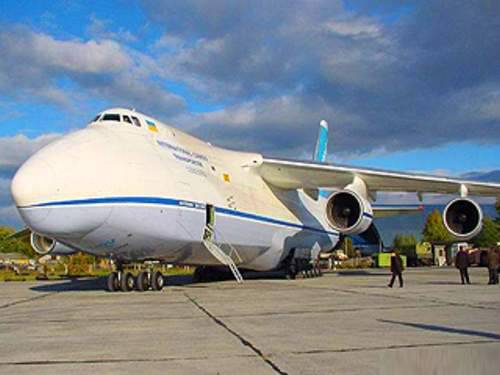
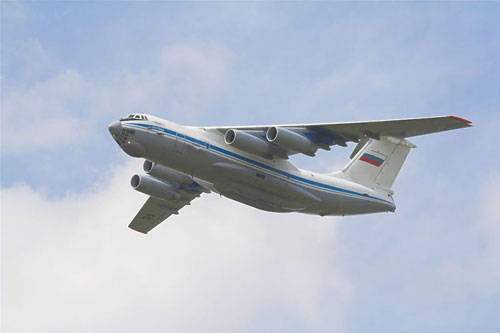
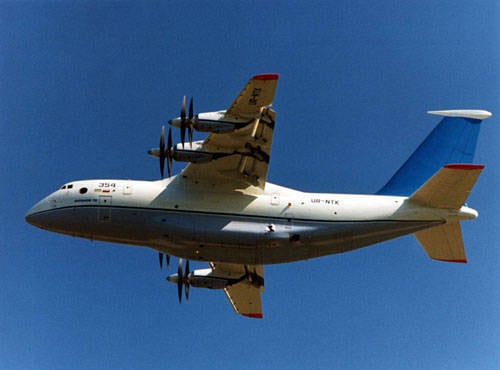
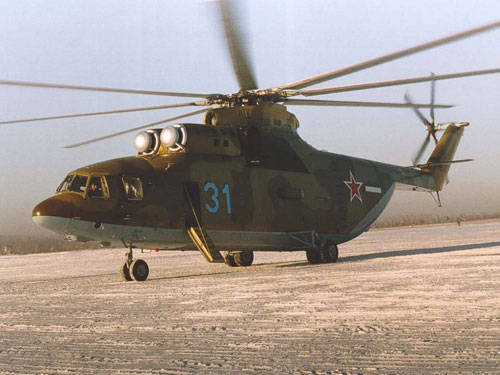
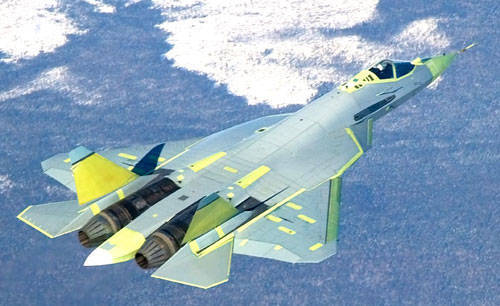
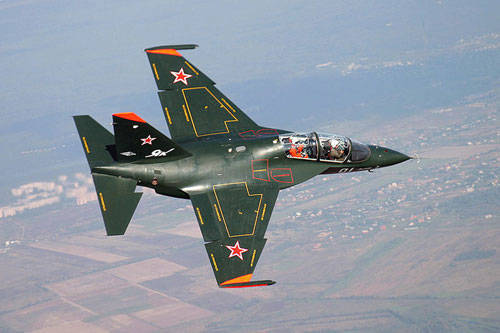
Financing the purchase of X-NUMX / Su-2010 / Su-60 fighters (35 of the year - for 30 billion rubles), 27 of the Su-2009 bomber (80 of the year, one machine cost more than 32 billion) rubles) and 34 of MiG-2008K ship-borne fighters (at least 1,1 billion, the contract has not yet been concluded).
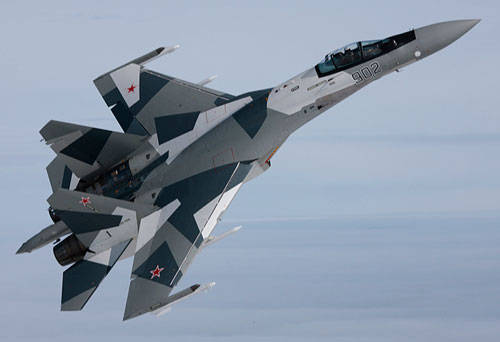
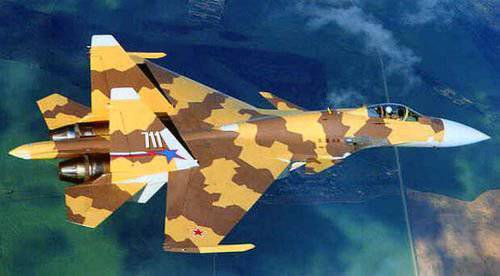
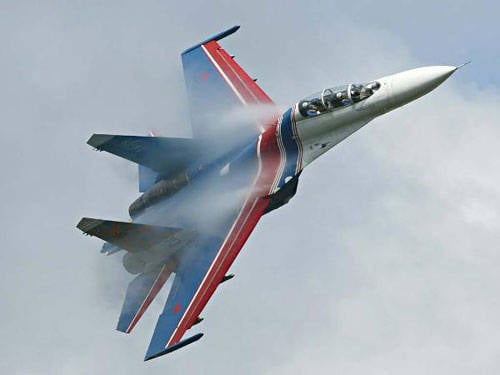
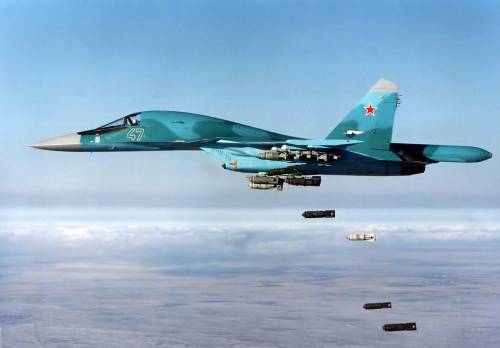
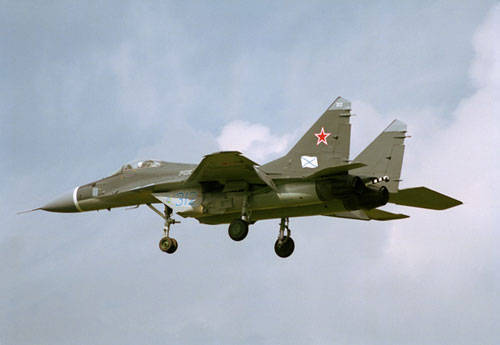
Quite costly programs are planned for fleetIt is planned to build at least two new nuclear submarines, projects 885 and 955 (and Bulava missiles for the latter), upgrade the Black Sea Fleet with three frigates of Project 11356M and the same number of diesel submarines of Project 636. All this will cost a rather impressive amount , several hundred billion rubles. It is impossible to give an accurate assessment, due to the secrecy of strategic arms prices.
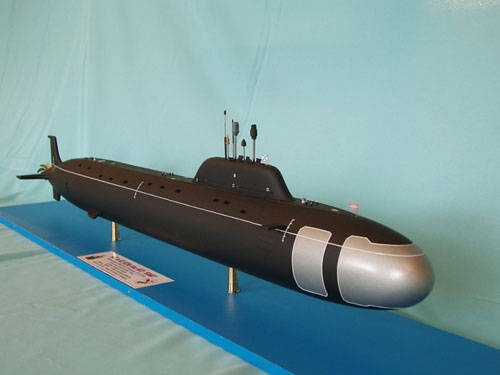
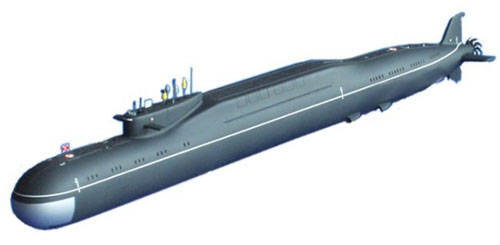
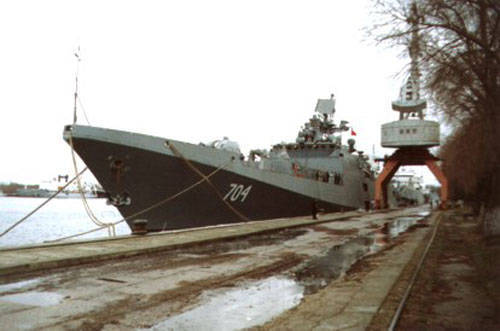
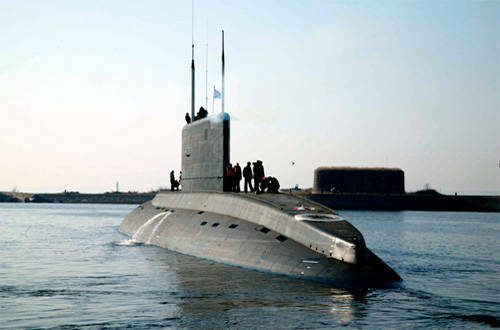
Such ambitious plans were voiced by the Deputy Minister of Defense, General Vladimir Popovkin.
A reasonable question arises, will the Russian MIC (defense industrial complex) cope with the ambitious tasks set for it? According to all available data, it turns out that it does not.
The website of the Ministry of Industry and Trade of Russia contains data clearly showing that in the military-industrial complex the increase in civilian production in January-December 2009 was observed only in the shipbuilding industry. In other branches of the complex there was a drop in production. In January-December, 2009 aircraft were delivered to customers of 48 aircraft, of which 14 medium and long-haul (TU-204 - 4 units, TU-214 - 3 units, IL-96-300 - 1 units, IL-96- 400 - 1 units, An-140 - 1 units, An-148 - 2 units, Be-200 - 2 units) and 141 helicopter (Mi-17-1В - 7 units, Mi-17-В5 - 41 units, Mi-8MTVB1 - 14 units, Mi-8MTVB5-1 - 9 units, Mi-26T - 1 units., Mi-172 - 2 units., Ansant-U - 6 units. 171 units, Ka-57 - 226 units).
The production of aircraft engines has decreased: auxiliary gas turbine engines, turboprop engines for airplanes and helicopters, for mainline airplanes. In the conventional arms industry, the volume of civilian products declined by 46,4%, due to a decrease in civilian production at a number of enterprises in the industry. The growth of civilian production is observed only at 11 enterprises of the industry. In the ammunition and special chemistry industry in 2009, civilian production declined by 28,2% compared to 2008. In the 2010 year, the volume of industrial production produced by enterprises of the military-industrial complex in the first half of the year 2010, according to operational information, increased by 14,1% compared to the same period of the 2009 year. But these are only export quantities.
Production of aircraft has increased by 6,7%. Two light mainline passenger An-148 aircraft were produced. For January – June, 2010 produced 54 helicopters units of which 31 units were exported (Mi-17-1В - 2 units (all for export), Mi-17-В5 - 22 units (all for export); Mi-171 - 5 units (all for export); Mi-8AMT - 21 units, Mi-8AMT1 - 1 units, Ka-32 - 2 units (all for export), Ka-226.50 - 1 units). But not all 24 helicopters will enter Russian units. Ulan-Udinsky AZ still has a contract with UTair for the delivery of 40 Mi-8AMT and Mi-171 helicopters for three years, which was announced by 21 on February 2008 of the year. Deliveries of UTair started in October of the same year, and today the company has already received a 23 helicopter. Deliveries of the remaining 17 machines were planned to be completed before the end of 2010. These data are not difficult to notice, as they mostly characterize only export dynamics.
But the data on our military orders leave much to be desired. The Ulan-Udi AZ Air Force ordered 47 serial Mi-28Н helicopters which should go to combat units in the next few years. In 2009, the company manufactured and transferred to the Russian Air Force ten Mi-28Н serial helicopters. At the same time, the total requirements of the Armed Forces of the Russian Federation in MI-28Н helicopters are estimated at about three hundred vehicles at such a pace, it is unlikely to be able to meet the 2020 year.
So according to the Ministry of Industry and Trade of Russia, it appears that as of August 2010, the Air Force and Air Defense did not receive a single helicopter. The 2009 data of the year speaks of the release of two heavy Mi-26T transport helicopters at Rostvertol, although it is reliably known only about one Mi-26TS manufactured in Rostov last year and delivered to the customer from China in July.
At the same time, attempts by the Russian defense-industrial complex to please the plans of the military led to a decline in the production of agricultural machinery and equipment, chemical products, electric motors, and road-building communal equipment. The repair of aviation technology and civil aviation services has decreased.
The ill-conceived procurement structure proposed by the Ministry of Defense turned out to be unprofitable in its essence, the result is sad, the defense industry complex is bursting at the seams.
3. Another significant military event 2010 of the year, a PR company of the operational-strategic exercises "Vostok-2010".
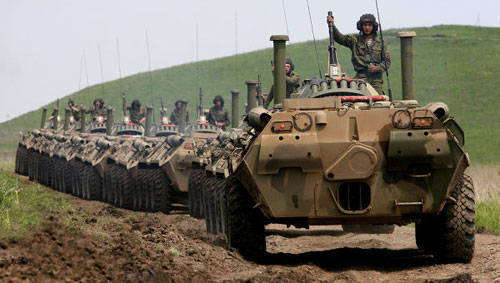
The ambitious Operational and Strategic Exercises "Vostok-2010" were planned as verification tests as part of the ongoing reform. More than 200 journalists from almost all regions of Russia, who were called to cover the exercises in the media, were attracted to participate in the PR campaign of this military-military event. The catch was that initially it was not planned to demonstrate something particularly new, standard exercises, the same as 10 20 30 years ago. But according to the idea of the authors, naive journalists and even more naive viewers, readers and listeners, should have hit the scale and power of the action taking place.
In fact, by order of the Minister of Defense of the Russian Federation, alert units were raised on alert. In the PUrVO (Volga-Ural Military District) - Simferopol motorized rifle twice the order brigade. In the Siberian Military District tank Brigade and the 74th Separate Guards Motorized Rifle Zvenigorod-Berlin Order of the Suvorov Brigade, stationed in the city of Yurga in Kuzbass. In the Far East, several missile and artillery brigades, two separate motorized rifle brigades, a machine gun and artillery brigade, the 247th Red Banner base for storing and repairing weapons and equipment of brigade personnel were alerted. From the Air Force and Air Defense - airbases of military transport aviation (BTA), two anti-aircraft missile brigades of military air defense and anti-aircraft missile regiment at the S-300 complexes of the Siberian Air Force and Air Defense Association, part of the aviation forces of the 3rd Air Force and Air Defense Command. From the Navy - the ship of the Black Sea Fleet, the guards missile cruiser "Moscow". From the Red Banner Northern Fleet (SF) the heavy nuclear missile cruiser (TARKR) "Peter the Great" ("Petr Velikiy") and the Marine Corps. From the Baltic Fleet, the airborne assault companies of the battalion of the marine corps. From the Pacific Fleet, two anti-submarine, two BKP, support vessels and a marine brigade deployed in Primorye.
From the Ministry of Internal Affairs - the special forces of the Siberian regional command of the Interior Troops of the Ministry of Internal Affairs of Russia (to the company), from the city militia Yurga 14 to the employees of the city department of the Ministry of Internal Affairs.
According to the plan, about 2010 thousands of troops, up to 20 thousands of weapons (including military and special equipment), up to 2,5 aircraft, up to 70 ships took part in the Vostok-30 exercise. The strategic bombers Tu-95MS, Tu-22МЗ, tankers Il-78, military transport planes Il-76 and An-12, long-range radar detection aircraft A-50 ", airplanes Su -25, Su-24, MiG-31, Su-34, Su-27, as well as Mi-24, Mi-8 helicopters.
Directly involved in the exercises: From the Siberian Military District participated the motorized rifle and tank brigade (10 thousands of personnel and 1,5 thousands of equipment); from the PUVO battalion tactical group and the operational control group of a separate motorized rifle brigade (about 600 military personnel); from DolVO - missile and artillery brigades, two separate motorized rifle brigades, a machine-gun - artillery brigade, a base for storing and repairing weapons and equipment of the brigade.
From the Air Force and Air Defense, a detachment of Il-76MD aircraft of the military transport aviation base (BTA), two anti-aircraft missile divisions of military anti-aircraft defense and two anti-aircraft missile divisions on C-300 complexes of the Siberian Air Force and Air Defense. From the Pacific Fleet from 88 ships to 30 participated warships, including the two large anti-submarine ships Admiral Tributs and Admiral Vinogradov, the Oslyabya BDK (large landing ship) and Nikolai Vilkov BDK, as well as more 20 ships aircraft and helicopters of naval aviation. From the Northern Fleet, the heavy nuclear missile cruiser "Peter the Great", with units of the Marine Corps of the Northern Fleet. From the Black Sea Fleet - one Guards missile cruiser "Moscow". From the Baltic Fleet, the airborne assault company of the battalion of the Marine Brigade. From the Space Forces: two anti-aircraft missile divisions stationed in Khabarovsk and Vladivostok. From the railway troops - the bridge company, with strengthening.
All events of the exercise took place at the Yurginsky training ground (Kuzbass), at the district Three-Rivers landfill (Amur region), at the Tsugol testing grounds in the Trans-Baikal Territory and at the Kniaze-Volkonsky landfill (Khabarovsk Territory), at the Burduny training ground (Republic of Buryatia), at Sergeevsky District the combined-arms range, on the landing range of the Clerk Peninsula, all this action bore the epic name of “the battle on Telemba”. Yes, nothing can be said, on a large scale, it amazes the imagination, but only among the ignorant people, the military specialists did not see any strategic or operational scale in this battle.
By the strategic scale military conducting exercises equated: separate motorized rifle brigade of Siberian Military District (. 200 combat vehicles Ido 1500 people personnel) Motorized Infantry Brigade Dal BO (5.000 servicemen, over 200 military equipment), a battalion task force infantry brigade Purva (about 600 military personnel.), a part of the motorized rifle brigade deployed on the island of Iturup, (1500 military personnel and 200 units of special military equipment).
They equated the operational scale: one anti-aircraft missile division of the air defense forces of the Siberian military district, two anti-aircraft missile divisions of the aerospace defense brigade - deployed in Khabarovsk and Vladivostok. And the fleet became operational by two BOD, airborne assault battalion of the brigade of marines of the Pacific Fleet.
The parachute company and the Ussurian airborne brigade were equated with the strategic landing force.
At its core, OSU (Operational and Strategic Exercises) “Vostok 2010” - turned out to be command-staff exercises (command and staff exercises), with live firing of brigades, battalions and designated enemy.
At the first stage of the exercise, a detachment of Il-76MD planes carried out transportation of a battalion tactical group and an operational brigade command and control group, and it immediately became clear that these exercises were another window dressing, as everything that the detachment of planes carried could only be carried by Ruslan alone. It is unlikely that the chief of the General Staff and the commanders of the districts, led by the Minister of Defense, received a worthy practice of managing the strategic redeployment of troops, redeploying military personnel to 600 that would fit in the same plane. Even taking into account the fact that the Russian army, according to the organizers of the exercises, “worked for the first time in many years,” the inter-theater transfer of permanent readiness troops, the benefits of this transfer seem very, very doubtful.
As mentioned above, these exercises were organized to impress an incompetent person in military matters, for example, the Supreme Commander-Photographer or the Minister of Defense, who received the nickname “stool worker”. In a military man, these exercises will cause a smile at best, it immediately becomes clear to him that this “toy battle”, with a spectacular landing of marines, was played by a maximum battalion of marines, and even according to summer standards 20-30 for visiting journalists and officials.
As befits the media, they solidly and unobtrusively highlighted the most advantageous elements of the “battles”, combat campaigns, and launches of tactical missiles.
The Russian President should have been shown a “over-the-horizon landing”, and this is a different background of exercises. The Department of Defense should and was obliged to show the Supreme Commander the landing of assault echelons of the Marine Corps using - air cushion boats, using heavy transport-assault helicopters, beyond the detection range of coastal observation posts and the reach of anti-airborne defense weapons (30-50 miles from coast). But unfortunately there are no hovercrafts on the Pacific Fleet, and there are no transport helicopters for the delivery of lightweight vehicles. In the light of the then decided question of buying a Mistral helicopter carrier from France, another reasonable question arises: why buy it at all? If the General Staff is not capable of demonstrating to the Supreme Commander the principles of the Mistral’s action in landing.
The fact that the General Staff tried to patch holes in the general theory of modern military art by throwing air and naval landings becomes obvious. So, as according to the majority of leading military experts of the West and Russia, in the first half of the XXI century. there are practically no global military threats for which the participation of hundreds of thousands of armored vehicles (tanks, armored personnel carriers, infantry fighting vehicles, armored personnel carriers, self-propelled guns) and other heavy equipment is necessary. It is assumed that the main threats to stability in the world are possible mainly in coastal areas to a depth of 200-300 km from the coast. Up to 60% of the total world population lives approximately in these areas. Brigades, a battalion tactical group of motorized infantry, airborne assault battalions of naval brigades, anti-aircraft missile divisions, parachute companies, bridge-building companies of railway troops were never strategic or operational elements in military operations.
4. According to the results of the Vostok-2010 exercises, instead of six military districts of four fleets and a flotilla, four joint strategic commands (USC) were created.
Despite their incomprehensibility and ostentatiousness, the operational-strategic exercises “East 2010” conducted nevertheless had positive results.
For the first time, new models of military equipment were used in the field, such as: aerosol masking machines and masking foam coatings, heavy flamethrower systems, the latest generation of dummies, electronic means of countering reconnaissance of a conditional enemy. For the first time, inflatable mockups of C-300 installations reflecting radio emission were used. For the first time, a separate radar company from Komsomolsk-on-Amur was redeployed under Khabarovsk, also using masking elements. For the first time, the battalion tactical group and the operational control group of a separate motorized rifle brigade of the PUVRO became part of the Far Eastern Military District after airlift without heavy equipment and weapons and received everything they needed on the spot, based on the storage and repair of weapons and equipment. For the first time, in practice, automated control systems (ACS) were used by troops and forces.
Immediately after the exercises held "East 2010" by the decree of the President of the Russian Federation, the expected transformations of military districts were put into effect. Instead of the existing six military districts of the four fleets and the flotilla, four USCs (joint strategic commands) will be created.
The USC "Tsenr", with headquarters in Yekaterinburg, will consist of the Northern Fleet, part of the Siberian and Volga-Ural districts.
USC "South", with headquarters in Rostov-on-Don, which will include the Black Sea Fleet, the Caspian Flotilla, the North Caucasus and part of the Volga-Urals Military District.
The USC Zapad, with its headquarters in St. Petersburg, will include the Leningrad and Moscow military districts and the Baltic Fleet
RSC "Vostok", with headquarters in Khabarovsk, will comprise the Far Eastern District, part of the Siberian District and the Pacific Fleet
USC headquarters, almost all will remain in their places, in cities where district headquarters were, with the exception of Chita, will be moved to Khabarovsk closer to the sea and Moscow, which is planned to be unloaded from management structures in general.
From what was new at the Vostok-2010 exercise and what I would like to mention. The Il-76MD detachment traveled 5.905 kilometers from the Koltsovo airfield to Vozdvizhenka airfield near Ussuriysk at the estimated cruising speed for a dozen flight hours, but with a stop for refueling at Belaya military airfield near Irkutsk. From the central part of Russia to the area of the Vostok-2010 exercise, a non-stop eight-hour flight was carried out with 2-3 refueling in the air 26 of Su-24 front-line bombers and the latest multifunctional Su-34 fighters.The same aircraft, having covered a total of more than 8 thousands of kilometers, made a non-stop flight to the home airfield near Voronezh with three refueling airplanes from IL-78 tankers. The flight time was 6 hours 55 minutes. Russian planes and helicopters burned 1.026 tons of aviation fuel, 167 was flown on various aircraft, with a total flight time of 256. The expenditure of missiles amounted to 223 pieces (four of them managed), dropped 88 bombs. For aviation weapons, the percentage of hits was 98%.
Another of the innovations in the exercise "Vostok-2010" were "the issues of interaction and bringing solutions to the fighting by the method of video conferencing." This is clearly another stupidity of the ignorant in the organization of interaction. Perhaps the only thing unavailable to technology is the organization of interaction. Bringing decisions to the fighting can be announced by video conferencing. Interaction issues for an offensive or organization of defense are ideally prepared on a mock terrain. In this case, there should be direct participants in the hostilities. In order to organize an offensive, defense, anti-landing defense, signalmen, scouts, motorized riflemen, tankmen, artillerymen, pilots, sailors, engineers of engineering troops, logistics, repair, border and internal troops are obliged to be present. I admit that bringing the decision to the fighting is possible by the "video conference method", and the organization of interaction is necessary for the "honorable tick in the report" about the innovation.
In general, the findings are again disappointing.
The reforms carried out by the Minister of Defense and the Chief of the General Staff of the OCU without new equipment (in the army, provision of new equipment from 10 to 15%) is meaningless and useless for the defense capability of Russia. In the present exercises, the formations and military units of the army, the Air Forces of the Artillery Party and the fleet operate in a new organizational structure. The introduction of a three-level system of command and control of troops in modern military conflicts on the territory of the Russian Federation and the conduct of the Vostok 2010 exercises did not provide clarity. Ironically, most of the border states have modern armies and divisions (USA, Japan, China), and only the Russian army is persistently promoting operational-strategic command that is not vital for Russia. None of the military really did not explain what it is. Having a little fantasy, you can come up with such a version, someone from the inner circle of the administration or the defense minister wrote a doctoral dissertation on operational strategic command (USC), and this innovation is being instilled into the Russian army. In fact, the USC - the army of the brigade. Such a composition has its advantages in combat operations in the mountains, winning in mobility and maneuverability, to the detriment of firepower. But with defense (including the sea coast) and an active offensive, firepower is more important than maneuverability.
The officers of one of the motorized rifle brigades that took part in the exercises complained: the number of officers and support services is extremely small in the new staffing schedules sent to the troops at the end of 2008. Because of this, part of the forces of the brigade, such as air defense weapons, were physically unable to get to the landfill. Already in August, new brigade staffs are waiting for the troops, but it is rumored that they will have even fewer officers. In the motorized rifle brigade, their number will be reduced from about 200 to 100 people, which will significantly complicate the situation.
Until now, the army has not been equipped with portable and fixed receivers of the Global Navigation Satellite System (GLONASS). The brigade does not have at its disposal units of unmanned aerial vehicles (UAVs) that would observe the battlefield throughout the entire range of the enemy’s means of destruction, helping to anticipate his next maneuver.
The experience of the war in the Caucasus 2008, was not taken into account. The exercises confirmed once again: the inclusion of army aviation in the Air Force and Air Defense was erroneous. Army aviation posts in districts and brigades have not been restored. At the same time, army aviation was left in the space forces, the strategic missile forces, the Ministry of Internal Affairs, the Ministry of Emergency Situations, the FSB. The same is in the armies of other countries. The NATO ground forces include more than 2470 combat helicopters, more than 800 in each US Army corps, of which up to 350 are shock, and in the 100 division are 150 helicopters.
Existing intelligence, communications, and control systems are not transferred from analog to digital. It is doubtful that this will happen by the 2015 year, as planned by the military, and that by the same time a unified communications system of the Armed Forces of Russia will be created. In the US, the transfer of the army to digital technology began in the year 1987. In Israel, army specialists developed programs to transfer the communications of troops to a digital basis in 2005, it was already used in some Israeli units in 2006 in the second Lebanon war and in 2009 in the battles against Hamas in the Gaza Strip.
Also, the information voiced by the Commander-in-Chief of the Ground Forces Alexander Postnikov that the brigades at the exercises were half consisted of recruits called up one two months ago, allegedly “in two months mastered practical skills and their weapons”,
More similar to the truth, another version is that the commanders in the Far East detained soldiers in the army, who had already served one year. They turned out to be 23% of those who took part in the Vostok-2010 exercises. The training of the flight and ship personnel is now planned to be carried out respectively in the annual and biennial training cycle. An increase in the time of single and special training is planned.
5. Also, the results of the past 2010 year include the reasonable assumption that the Minister of Defense of the Russian Federation and the Chief of the General Staff of the Russian Federation are in fact a subdivision of the Presidential Administration of the Russian Federation. As a justification of this statement, one can argue that the Minister carefully protects the Russian budget mainly where it is not necessary, and the chief of staff is preparing a reserve of generals for the Presidential Administration.
If we talk about the budget, then it can be noted that not all funds allocated for defense from the budget are used for the necessary purposes. For example, the pension of veterans of the Armed Forces of the Russian Federation is one of the lowest pensions in Russia. In 40% of veterans, the military pension does not even reach the subsistence level, which is the result of a reduction in pension expenditures by the Ministry of Defense of the Russian Federation. Also, the military department headed by Serdyukov diligently protects the budget by reducing the officer corps, respectively, reducing the expenses for salaries and salaries.
The Chief of the General Staff distinguished himself in 2010 on a different field, in the field of education and training of personnel officers of the army at the Academy of the General Staff (AGSh). Makarov introduced the following educational proposal, which lasts two years. In the first year, on the proposal of Makarov, 80% of training time should be given to study military disciplines at the strategic and operational level, for the subsequent qualified leadership of strategic groups and the military forces in general. It seems to be all right, as it should be, as it should be, but further, as they say, “Ostap suffered”, the remaining 20% of the first year of study and the second course should be fully devoted to the study of sciences and disciplines that will allow graduates to work skillfully in the Government , in the Presidential Administration and even in the governor’s posts. To put it mildly, a rather strange proposal, who Makarov is going to prepare is not clear, but definitely not generals for the troops. Here is such a military training!
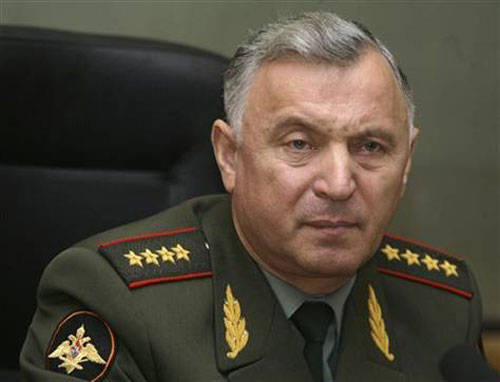
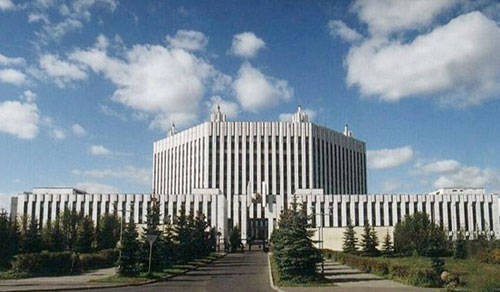
6. Reducing the level of military authorities (especially the strategic level) - as the main component of the army system. Another sad result of 2010 of the year is a kind of justification for the reductions and transformations carried out within the framework of the reform.
This definition is understood to mean a reduction in official and staff categories, the appearance of senior lieutenants, captains, and majors in these management structures, as the inevitable result of a significant qualification decline. Thanks to this reduction in the level, people, professionals with vast experience, the best military personnel, and the elite are leaving. Someone leaves himself, but the majority leaves because of the impossibility to work in a specially created framework, working in which it’s impossible not to leave a self-respecting person. Certainly, the result of such a reduction in the level of reform, after five years, the reformers will not be in the best possible way.
7.Partial transfer of functions of the Internal Troops of the Ministry of Internal Affairs of the Ministry of Emergency Situations of the FSB and the Border Guard Service of the FSB to army units.
In 2010, rather strange exercises were held. According to the scenario of the exercise, army motorized rifle units under the direction of the commander of the motorized rifle brigade should have been directly involved in a joint operation of the Interior Ministry of the Emergencies Ministry of the FSB and the FSB Frontier Service in localizing and eliminating internal armed conflicts, as part of a special operation to restore the constitutional order in the Siberian Federal District! Within the framework of the OSU, the army units were assigned unusual tasks for them to provide universal assistance to units of the Internal Troops of the Ministry of Internal Affairs, the Federal Security Service and other internal forces. As is known, the defeat of bandit groups never entered the functions of the army, these functions have always been the prerogative of the Interior Ministry, the FSB and the internal troops. The purpose of the army is the struggle against the external enemy.
The question arises: The army gradually begins to perform gendarme functions?
This again suggests a disappointing conclusion, the Government is afraid of its people more than NATO, terrorists and all other potential enemies of Russia combined. Cuts in the army as part of the reform, which threaten to convert the number of troops to the army of a banana republic, and inflated by the Ministry of Internal Affairs, building up the arsenal of internal troops, selling military objects "from the hammer," and the constant running of policemen, take their places. through hot spots.
The second scenario provided for joint actions of the army and the Ministry of Emergency Situations to eliminate the consequences of man-made disasters and emergency situations.
Under the third scenario, the Pacific Fleet ships were to interact with the Frontier Service of the regional department of the FSB of Russia. It was assumed that the ships of the Pacific Fleet will help the border guards to catch poachers, pirates and help protect the sea borders of our country. Apparently for the ships of the Pacific Fleet there were no decent combat missions, so they decided to let the poachers chase while.
8. A new concept of “outsourcing” has been established in the army.
Outsourcing (from English outsourcing: (outer-source-using) using an external source / resource) - the organization transfers certain business processes or production functions to serve another company specializing in the relevant field on the basis of an agreement. Unlike service and support services that are one-time, episodic, random, and limited to the beginning and the end, outsourcing usually transfers the functions of professional support for the uninterrupted operation of individual systems and infrastructure based on a long-term contract (at least 1 of the year). The presence of a business process is a distinctive feature of outsourcing from various other forms of service delivery and subscription service.
Wikipedia, the free encyclopedia
Speaking more simply, “outsourcing” is the use of foreign resources, this concept has been established in the army also as part of the ongoing reform, the so-called humanization.
Even more clearly, this term can be explained as follows: the soldiers no longer peel potatoes and do not sweep the parade ground - for them the professionals do it. For such a humanism, the MoD pays huge sums of money to nursing and washing off civilian organizations.
It looks like another scam in the spirit of corruption-cuts that have already set the edge on edge.
9. The army introduced a new form of the famous couturier Yudashkin.
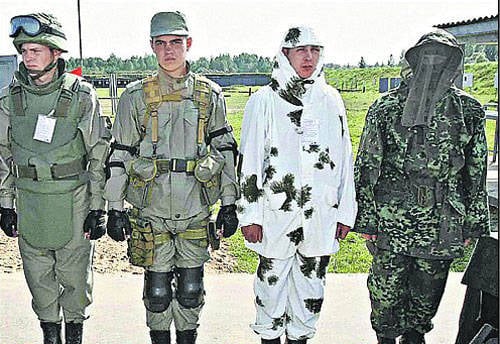
The famous Couturier is probably only famous for the fact that, at the request of the Supreme Commander, he sewed a soldier's uniform that meets all the requirements of high fashion, but, as it turned out, was not well adapted to the harsh soldier's life. The main features of the new form are a change in the location of epaulets, the left epaulet from the shoulder moved to the sleeve just above the elbow, the right one was on the chest to disguise from sniper fire.
In November, 2010 of the year more than 200 recruits appreciated all the delights of the new form, which came into the army from the world of high fashion, thanks to her they got into the hospital with a diagnosis of hypothermia. The incident happened in Kuzbass, dozens of people were hospitalized with severe hypothermia, some of them had kidney problems.
The cause of this incident was a new form, as it turned out badly withstanding low winter temperatures. After this incident, some military leaders made a proposal to return to the less chic, but more practical and better adapted to the harsh everyday routine of the soldiers.
10. Another sad result, rather not even a result, but a statement of fact: a reformed army is not ready to fight fires.
As you know, the 2010 summer in Russia was hot. The central and European part of Russia burned in the literal sense of the word, the cities choked in the smoke of fires. Great hopes in putting out fires were pinned on the Russian army. But, as it turned out, nothing happened, and in this area a successful reform took place, after which practically everything that the Russian army was able to offer to help the population in putting out fires is cadets with shovels.
Prior to the current reform, each division in a separate sapper battalion had barrage machines, heavy machinery on a tank base, and stations for extracting water. There are no divisions, and with them the rest. With the liquidation of the Academy of Engineering. Kuibyshev reduced the department of water production. It after the catastrophic fires just need to be restored.
The USSR Armed Forces had 18 pipeline brigades capable of deploying a 120 km of pipeline with a diameter of 100 and 150 mm in one day. In parts of the civil defense were sets of pipelines up to 15 km. To extinguish the fires, bombing was carried out by aircraft, barrage machines were used, and installations for laying passages in minefields were used. But the pipeline brigades are disbanded today. Only a brigade of the Moscow Military District was able to stretch the thread in 10 km.
What kind of help to the population can we talk about when the military itself is still burning and burning with a blue flame. 29 July 2010. fire destroyed the air base (TSATB). The first decision of the Minister of Defense Anatoly Serdyukov to conceal the lack of thoughtfulness of the decision on the all-out reduction of non-departmental teams. It is curious that from the side of the Ministry of Defense there were at first ridiculous statements that there is no naval base near Kolomna, and there is only a military unit on this territory. “There is no naval air base in the Kolomna district of the Moscow region. Moreover, information about the destruction of more than 200 airplanes and helicopters worth 20 billion rubles by fire is fiction and does not correspond to reality. In fact, the Central 2512 Aviation Technical Base (TSATB) of the naval aviation of the Russian Navy is located on the outskirts of the city of Kolomna (Shchurovo region). The base is intended for storage and processing of aviation, hydrographic and navigational equipment coming from industrial enterprises, aviation technical units, military educational institutions and repair enterprises of the Navy. Fire at a secret facility could have been avoided. But as it turned out, there were no fire brigades on a secure facility - they were recently reduced. Extinguish the fire came only two calculations from neighboring parts. The burned-down naval aviation base did not have its own fire brigade and could not put out the fire on its own. Although it used to have its own fire department. If there was a fire somewhere nearby, fire engines immediately left and extinguished the fire beforehand. Firefighters cut, reduced, and the department of private security. From 60 officers of the military unit left only 4! It is clear that the base commander could not reduce the fire protection, without the approval of the commander-in-chief of the Navy V. Vysotsky. The commander-in-chief, in turn, carried out the order of the Minister of Defense on the reduction of private fire brigades.
According to the results of the debriefing, the President made a decision to dismiss the admirals of the headquarters of the Navy, the stool operator, as always, left the water. Also in the army, in particular in the engineering troops, there is talk of an unjust attitude towards the head of the engineering troops of the Prib - Ural district and the head of the army engineering service as it is known who were dismissed from their posts after the tragic events in Ulyanovsk. Apparently, the Supreme Commander did not know that for the explosions in the naval arsenal in Ulyanovka, the main fault lies with the actions of the naval authorities. Moreover, the fleet arsenal was incorporated and transferred to the business. Imagine - fleet arsenal - is corporatized? The chief of the engineering troops, the chief of the army engineering service had nothing to do with these events. Corruption and business communications are stronger than service relations.
11. The admission of cadets to higher military establishments has been completely stopped.
The intention of the Russian Defense Ministry to suspend the training of officers became known at the end of June 2010. In the course of this reform, 70 military science centers will be created from almost 10 military schools.
According to statements made by representatives of the Ministry of Defense, this decision was due to the desire to keep the current officer corps.
“Today we need to focus on maintaining the current officer corps, bearing in mind that the releases of both 2011 and 2012 and 2013 will be large - under 15 thousands of lieutenants annually,” commented Secretary of State Nikolai Pankov on the decision. .
According to the Deputy Chief of the Personnel Directorate of the Armed Forces of Tamara Fraltsova, this decision is associated with an oversupply of officer personnel and a shortage of officer positions in the Armed Forces.
As you can see about a significant reduction in the quality of training for officers, the military officials forgot to mention or most likely did not want to touch on this sore subject.
Nevertheless, one of the main factors reducing the quality of officers' training was the early dismissal from military service of teachers with academic degrees on a scale substantially exceeding their graduation from the adjunct and military doctoral programs. The outflow from military schools of qualified military teachers and young scientists is influenced by organizational measures that are held repeatedly and also by the imperfection of moral and material incentives for teaching and scientific work.
For four years (from 2008 to 2012 year), the uninterrupted process of preparing military education was disrupted. Therefore, most of the military professors and candidates of science left. Educational and material base is in disrepair. Teaching rank: captain at school, major in academy.
Therefore, a year later, two downtime of higher military educational institutions will have to recruit not cadets but the teaching staff.
Perhaps, this decision will somehow justify itself later, but we need to think about where the young people will go now, who were going to enroll in military universities, what will happen to the teaching staff (well, will they pay money for idleness?), Who will maintain the material and technical base.
These are the main military-industrial results left the Russian army who went to history 2010 year.
But besides that, in the 2010 year, many other significant events happened in the military sphere of Russia, which I would also like to focus on.
Continued - Part II
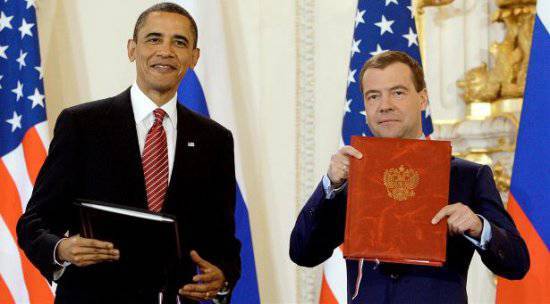
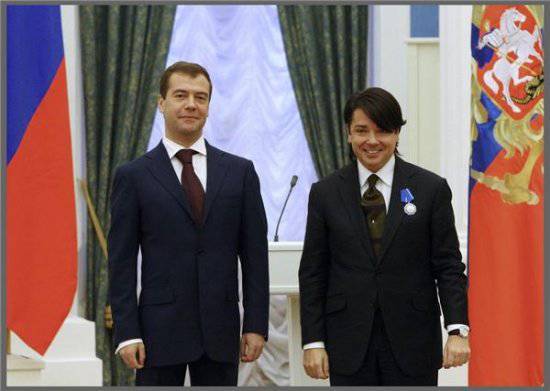
Information